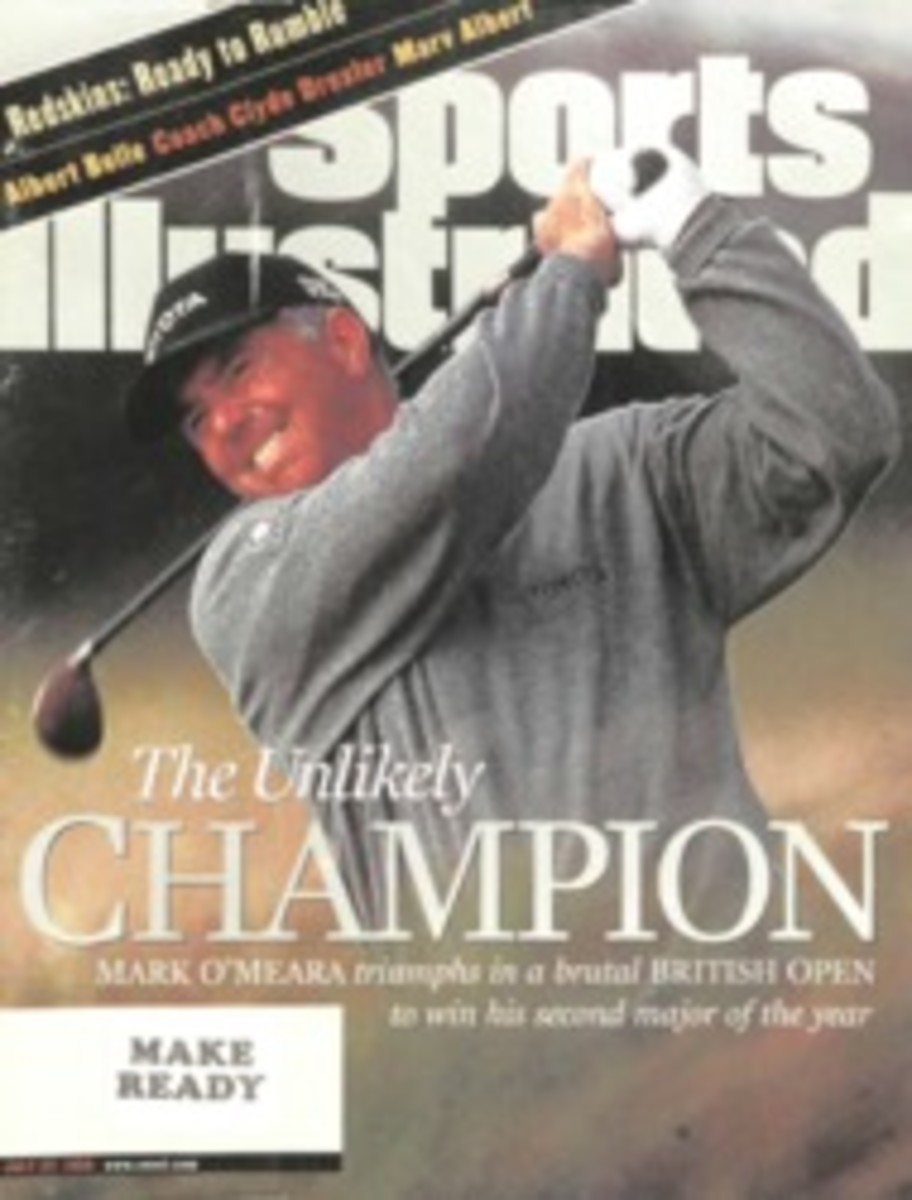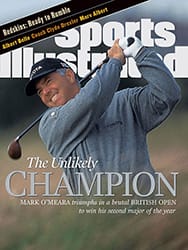
Hitting The Wall Even great hitters eventually decline, and Tony Gwynn's time may be near
Never mind McGwire, Griffey and Sosa. The closest three-way race
this season features Tony Gwynn, Nap Lajoie and Jesse (the Crab)
Burkett. Last year Gwynn hit .372 to improve his lifetime
average to .340, good for eighth place on the alltime list of
hitters with at least 8,000 at bats. But when Dodgers pitcher
Brian Bohanon induced him to hit into a double play on July 12,
Gwynn fell victim to something he had never suffered through the
first 2,173 games of his remarkable career: an 0-for-15 slump.
Six times previously Gwynn's 0-fers had reached 14 but never
beyond. This streak would eventually extend to 0 for 19, which
hardly seems like the end of the world. The Dodgers' Gil Hodges
went 0 for 21 in the 1952 World Series. Pitcher Bob Buhl of the
Cubs went 0 for 70 in '62. Yet even batmeister Gwynn admitted to
the yips. "[My] confidence was slipping through the windows," he
said last week.
If Gwynn was worried, so too were historians, who wondered if he
had hit the baseball equivalent of the marathoners' wall and had
begun to decline. Images arose of Mickey Mantle, who lingered
with the Yankees just long enough to drop from a lifetime .302
average through his penultimate season to a .298 for eternity.
Does such a wall exist? It seemed to for Burkett in 1903 and for
Lajoie a decade later. Burkett, a cantankerous (hence the Crab
appellation) two-time .400 hitter for the Cleveland Spiders in
the 1890s, was still tooling along at a career .350 clip with
7,273 career at bats through '03, according to Total Baseball.
He played two more years, batting .264 in that period, and ended
at .3384, which is now good for ninth place among hitters with
8,000 at bats. (Through Sunday, Gwynn was still eighth, but had
dipped to .3385.) Gwynn's situation is even more chillingly
reminiscent of Lajoie's story. The great second baseman hit .350
through the 1913 season but only .262 the rest of the way,
leaving him at .3381 alltime. Lajoie had 8,254 at bats at the
end of '13; Gwynn had 8,187 at the end of '97.
The great hitters do seem to hit a barrier somewhere between
7,500 and 9,000 at bats. Ty Cobb was hitting .373 through 8,762;
he hit .346 in his final 2,672 and finished at .366. Wee Willie
Keeler was "hitting 'em where they ain't" to the tune of .355
through 7,475 at bats; he finished at .341 after batting .253 in
his final four seasons. Honus Wagner lost 14 points off his
career average after his 8,237th at bat, Paul Waner dropped nine
after his 8,191st, and Rogers Hornsby lost three after his
7,915th.
Imminent cataclysm is not implied here. "Oh, yeah," Padres
manager Bruce Bochy said the day that Gwynn hit the 0-for-15 mark
at Dodger Stadium, "we'll be sending Tony down to [Triple A] Las
Vegas any day now." Dodgers announcer Ross Porter noted that
Gwynn's 0 for 19 could have gone on just a little bit longer
before his lifetime .300 average would be jeopardized. After
Sunday's game the exact figure was 0 for 1,109, at which point
he'd still be hitting .299511.
Of course by then his equally extraordinary good humor might have
waned a bit, too. When I saw Gwynn in the dugout at Dodger
Stadium, he was holding a small metallic device in one hand, so I
asked him about the hamstring he had aggravated reaching for Cal
Ripken's double at the All-Star Game. I pointed at the machine
and asked, "Is that your electric stimulator? Is that your stim?"
Gwynn laughed hard. "No, man. That's my mini-CD player. Will you
relax?"
COLOR PHOTO: V.J. LOVERO [Tony Gwynn batting in game]

